A Universal Aquaculture Environmental Anomaly Monitoring System
Abstract
:1. Introduction
2. Materials and Methods
2.1. Monitoring Devices Based on the Internet of Things
2.1.1. Control Module
2.1.2. Energy Supply Module
2.1.3. Wireless Transmission Module
2.1.4. Sensor Module
2.1.5. Data Acquisition Method and Process
2.2. Anomaly Detection Based on the STW-DBSCAN
2.3. Abnormal Warning Based on Fuzzy Control
- When the score ∈ [−10, 0), it represents a low dissolved oxygen interval.
- When the score = 0, it represents a suitable dissolved oxygen interval.
- When the score ∈ (0, 10], it represents a high dissolved oxygen interval.
2.4. Software Platform Based on Data Visualization
3. Test and Discussion
3.1. Hardware
- (1)
- Continuous sunny day: in this case, the power generation efficiency of the solar panel is 20%; the power generation in one day is about 150 × 6 × 20% = 180 Wh, and the daily power generation is greater than the daily power consumption. Under this condition, the equipment can be kept running.
- (2)
- Long-term rain: in this case, the power generation efficiency of the solar panel is 1%; the power generation in one day is about 150 × 6 × 1% = 9 Wh, and the daily power consumption is greater than the daily power generation. Under this condition, the device consumes 162.24 − 9 = 153.24 Wh and can run for 600/153.24 = 3.92 days.
- (3)
- Alternative sunny days and cloudy days: in this case, the power generation efficiency of the solar panel is 10%; the power generation in one day is about 150 × 6 × 10% = 90 Wh, and the daily power consumption is greater than the daily power generation. Under this condition, the system consumes 162.24 − 90 = 72.24 Wh and can run for 600/72.24 = 8.3 days.
3.2. Software
3.3. The Limitation of the Work
- (1)
- At present, this study only focuses on the detection of a single measurement point in the fishing ground, while most fishing grounds require multiple devices to work together, thus forming multi-source data analysis.
- (2)
- The device is limited by 4G base stations, which may cause it to not work properly in remote waters, and the communication success rate of it is in the middle of the range compared with the aquaculture monitoring system designed by other scholars.
- (3)
- In this study, the method used to deal with missing and abnormal data was the screening method, which failed to restore the original data. Moreover, part of the fuzzy control-based water quality control system could be used with autonomous regulation function, but this paper only stays in at the stage of providing regulation guidance theory.
4. Conclusions
- (1)
- A set of aquaculture environment monitoring equipment is built based on IOT, which adopts various power supply modes and can collect aquaculture environment information uninterruptedly all day long. It can work stably for a long time, and the communication success rate reaches 92.08%.
- (2)
- It is based on the STW-DBSCAN algorithm to monitor the abnormal data of aquaculture environment and use the confidence interval distance radius of sub-series slope for the initial screening of abnormal time periods, which not only has higher evaluation index but also can save data processing time compared with other current aquaculture abnormality identification methods.
- (3)
- Through the fuzzy control strategy to quantify the warning events, aquaculturists can take machine control or manual intervention to keep the aquaculture environment in a relatively stable state according to the quantified warning scores.
- (4)
- A human–computer interaction platform based on B/S architecture is built, and WebSocket duplex communication technology is used for data pushing to meet the demand of real-time monitoring visualization and persistent monitoring. The system is fully functional in visualization, highly portable and has good robustness.
Author Contributions
Funding
Institutional Review Board Statement
Informed Consent Statement
Data Availability Statement
Acknowledgments
Conflicts of Interest
References
- Moffitt, C.M.; Cajas-Cano, L. Blue growth: The 2014 FAO state of world fisheries and aquaculture. Fisheries 2014, 39, 552–553. [Google Scholar] [CrossRef]
- Edwards, P. Aquaculture environment interactions: Past, present and likely future trends. Aquaculture 2015, 447, 2–14. [Google Scholar] [CrossRef]
- Aryai, V.; Abbassi, R.; Abdussamie, N.; Salehi, F.; Garaniya, V.; Asadnia, M.; Baksh, A.A.; Penesis, I.; Karampour, H.; Draper, S.; et al. Reliability of multi-purpose offshore-facilities: Present status and future direction in Australia. Process Saf. Environ. Prot. 2021, 148, 437–461. [Google Scholar] [CrossRef] [PubMed]
- Miorandi, D.; Sicari, S.; De Pellegrini, F.; Chlamtac, I. Internet of things: Vision, applications and research challenges. Ad Hoc Netw. 2012, 10, 1497–1516. [Google Scholar] [CrossRef] [Green Version]
- Simbeye, D.S.; Zhao, J.; Yang, S. Design and deployment of wireless sensor networks for aquaculture monitoring and control based on virtual instruments. Comput. Electron. Agric. 2014, 102, 31–42. [Google Scholar] [CrossRef]
- Parra, L.; Sendra, S.; García, L.; Lloret, J. Design and deployment of low-cost sensors for monitoring the water quality and fish behavior in aquaculture tanks during the feeding process. Sensors 2018, 18, 750. [Google Scholar] [CrossRef] [Green Version]
- Schmidt, W.; Raymond, D.; Parish, D.; Ashton, I.G.C.; Miller, P.I.; Campos, C.J.A.; Shutler, J.D. Design and operation of a low-cost and compact autonomous buoy system for use in coastal aquaculture and water quality monitoring. Aquac. Eng. 2018, 80, 28–36. [Google Scholar] [CrossRef]
- Jamroen, C.; Yonsiri, N.; Odthon, T.; Wisitthiwong, N.; Janreung, S. A standalone photovoltaic/battery energy-powered water quality monitoring system based on narrowband internet of things for aquaculture: Design and implementation. Smart Agric. Technol. 2023, 3, 100072. [Google Scholar] [CrossRef]
- Lu, H.Y.; Cheng, C.Y.; Cheng, S.C.; Cheng, Y.H.; Lo, W.C.; Jiang, W.L.; Nan, F.H.; Chang, S.H. A low-cost AI buoy system for monitoring water quality at offshore aquaculture cages. Sensors 2022, 22, 4078. [Google Scholar] [CrossRef]
- Chen, C.H.; Wu, Y.C.; Zhang, J.X.; Chen, Y.H. IoT-based fish farm water quality monitoring system. Sensors 2022, 22, 6700. [Google Scholar] [CrossRef]
- Ferreira, N.C.; Bonetti, C.; Seiffert, W.Q. Hydrological and water quality indices as management tools in marine shrimp culture. Aquaculture 2011, 318, 425–433. [Google Scholar] [CrossRef]
- Syu, W.J.; Chang, T.K.; Pan, S.Y. Establishment of an automatic real-time monitoring system for irrigation water quality management. Int. J. Environ. Res. Public Health 2020, 17, 737. [Google Scholar] [CrossRef] [PubMed] [Green Version]
- Ding, J.; Sun, S.; Ma, J.; Li, N. Fusion estimation for multi-sensor networked systems with packet loss compensation. Inf. Fusion 2019, 45, 138–149. [Google Scholar] [CrossRef]
- Hu, M.; Ji, Z.; Yan, K.; Guo, Y.; Feng, X.; Gong, J.; Zhao, X.; Dong, L. Detecting anomalies in time series data via a meta-feature based approach. IEEE Access 2018, 6, 27760–27776. [Google Scholar] [CrossRef]
- Wang, L.; Wu, C. Dynamic imbalanced business credit evaluation based on Learn++ with sliding time window and weight sampling and FCM with multiple kernels. Inf. Sci. 2020, 520, 305–323. [Google Scholar] [CrossRef]
- Yu, Z.; Hua, X.; Sun, X.; Xue, Y.; Tian, Y. Study on density clustering based anomaly detection for aquaculture water. In Proceedings of the 2021 7th International Conference on Computing and Artificial Intelligence, Tianjin, China, 23–26 April 2021; pp. 227–232. [Google Scholar]
- Hamed, S.B.; Hamed, M.B.; Sbita, L.; Bajaj, M.; Blazek, V.; Prokop, L.; Misak, S.; Ghoneim, S.S. Robust Optimization and Power Management of a Triple Junction Photovoltaic Electric Vehicle with Battery Storage. Sensors 2022, 22, 6123. [Google Scholar] [CrossRef]
- Aisjah, A.S.; Arifin, S. Maritime weather prediction using fuzzy logic in Java Sea for shipping feasibility. Int. J. Artif. Intell. 2013, 10, 112–122. [Google Scholar]
- Dourra, H.; Siy, P. Investment using technical analysis and fuzzy logic. Fuzzy Sets Syst. 2002, 127, 221–240. [Google Scholar] [CrossRef]
- Ding, S.; Zhao, T.; Gao, F.; Tang, Z.; Jin, B. Research on a motion-inhibition fuzzy control method for moored ship with multi-robot system. Ocean Eng. 2022, 248, 110795. [Google Scholar] [CrossRef]
- Ali, F.; El-Sappagh, S.; Kwak, D. Fuzzy ontology and LSTM-based text mining: A transportation network monitoring system for assisting travel. Sensors 2019, 19, 234. [Google Scholar] [CrossRef] [Green Version]
- Li, T.; Luan, F.; Wang, M.; Song, Q.; Shi, Z. Design of Remote Monitoring System Based on STM32F407 Microcontroller. In Proceedings of the 2019 IEEE International Conference on Power, Intelligent Computing and Systems (ICPICS), Shenyang, China, 12–14 July 2019; IEEE: New York, NY, USA; pp. 304–307. [Google Scholar]
- Saboya, N. Normas de Comunicación en Serie: RS-232, RS-422 y RS-485. Rev. Ingenio Libre 2012, 9, 86–94. [Google Scholar]
- Akkurt, N. Investigation of the effect of aspect ratio in an enclosure filled with phase change materials and its effect on thermal management of lithium-ion batteries: Applicable for storing solar energy. J. Power Sources 2022, 539, 231606. [Google Scholar] [CrossRef]
- Lewis, E.L.; Perkin, R.G. Salinity: Its definition and calculation. J. Geophys. Res. Ocean. 1978, 83, 466–478. [Google Scholar] [CrossRef]
- Baydogan, M.G.; Runger, G.; Tuv, E. A bag-of-features framework to classify time series. IEEE Trans. Pattern Anal. Mach. Intell. 2013, 35, 2796–2802. [Google Scholar] [CrossRef] [PubMed]
- Hazra, A. Using the confidence interval confidently. J. Thorac. Dis. 2017, 9, 4125. [Google Scholar] [CrossRef] [Green Version]
- Zhang, C.; Huang, J.; Cheng, F. Monitoring of feeding rate and online control of parameters in primary processing of Tilapia. Trans. Chin. Soc. Agric. Eng. 2021, 37, 46–54. (In Chinese) [Google Scholar]
- Alves de Araujo Junior, C.A.; Mauricio Villanueva, J.M.; Almeida, R.J.S.D.; Azevedo de Medeiros, I.E. Digital Twins of the Water Cooling System in a Power Plant Based on Fuzzy Logic. Sensors 2021, 21, 6737. [Google Scholar] [CrossRef]
- Liu, Y.; Li, Z.; Cao, S.; Wang, Y. Design of intelligent monitoring system for aquaculture environment based on fuzzy control. Fish. Mod. 2020, 47, 25–32. (In Chinese) [Google Scholar]
- Ma, Z.; Wang, S.; Shen, J.; Li, S.; Shi, Y. Design of multi-energy joint optimization dispatching system for regional power grids based on B/S architecture. Energy Procedia 2019, 158, 6236–6241. [Google Scholar] [CrossRef]
- Lee, J.; Lee, E. Concerto: Dynamic Processor Scaling for Distributed Data Systems with Replication. Appl. Sci. 2021, 11, 5731. [Google Scholar] [CrossRef]
- Dymora, P.; Mazurek, M.; Sudek, B. Comparative Analysis of Selected Open-Source Solutions for Traffic Balancing in Server Infrastructures Providing WWW Service. Energies 2021, 14, 7719. [Google Scholar] [CrossRef]
- Nurwarsito, H.; Christian, R.D. River Water Pollutant Level Monitoring System using Websocket Protocol and LoRa Communication Module. In Proceedings of the 2021 2nd International Conference on ICT for Rural Development (IC-ICTRuDev), Virtual, 27–28 October 2021; pp. 1–6. [Google Scholar]
- Lin, Q.; Lin, B.; Zhang, D.; Wu, J. Web-based prototype system for flood simulation and forecasting based on the HEC-HMS model. Environ. Model. Softw. 2022, 158, 105541. [Google Scholar] [CrossRef]
- Huan, J.; Li, H.; Wu, F.; Cao, W. Design of water quality monitoring system for aquaculture ponds based on NB-IoT. Aquac. Eng. 2020, 90, 102088. [Google Scholar] [CrossRef]
- Wan, S.; Zhao, K.; Lu, Z.; Li, J.; Lu, T.; Wang, H. A Modularized IoT Monitoring System with Edge-Computing for Aquaponics. Sensors 2022, 22, 9260. [Google Scholar] [CrossRef] [PubMed]
- Hou, W.; Yu, C.; Chen, X. The Salinity Distribution in Zhoushan Fishing Ground. J. Zhejiang Ocean Univ. (Nat. Sci. Ed.) 2013, 32, 388–392. (In Chinese) [Google Scholar]
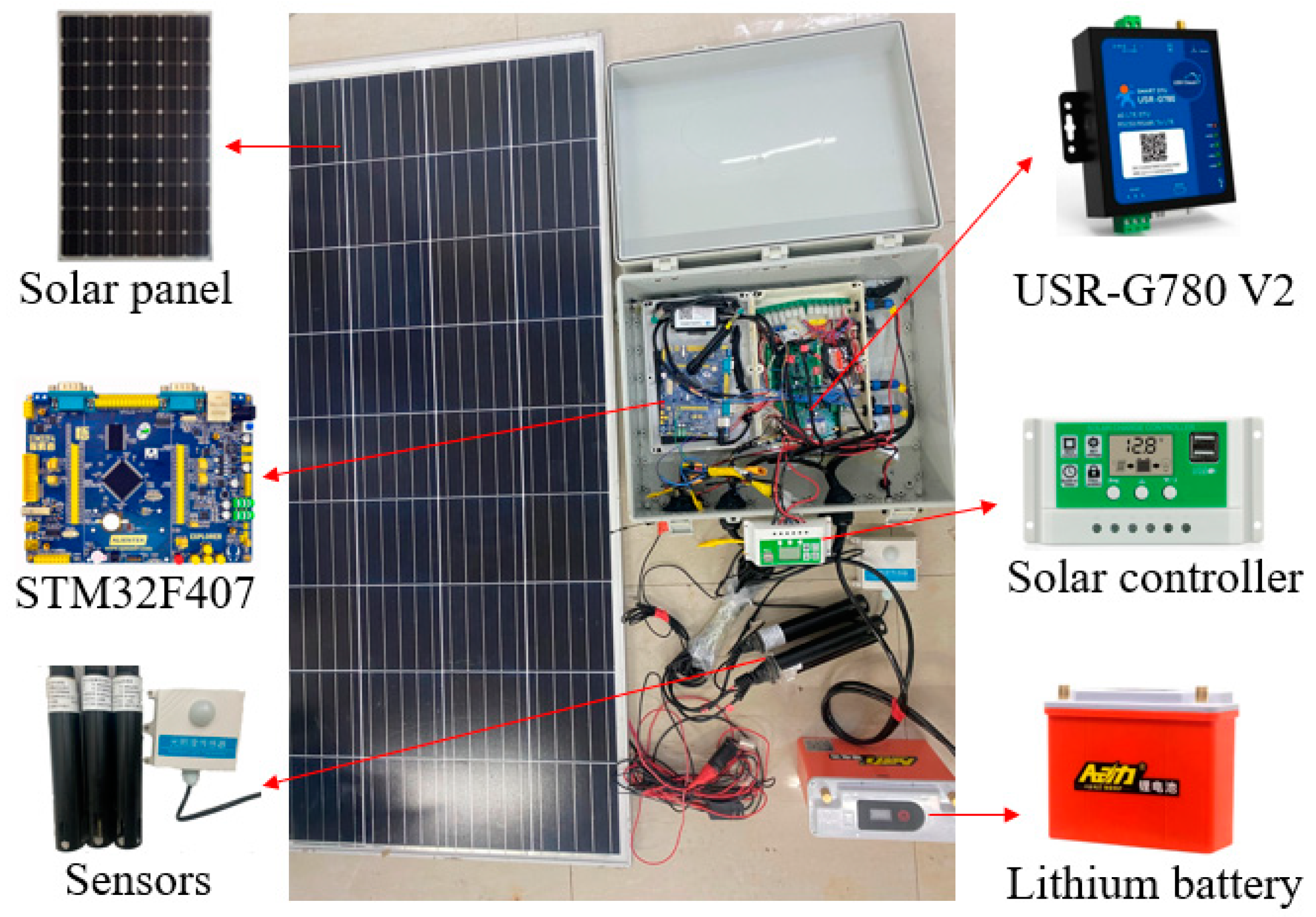
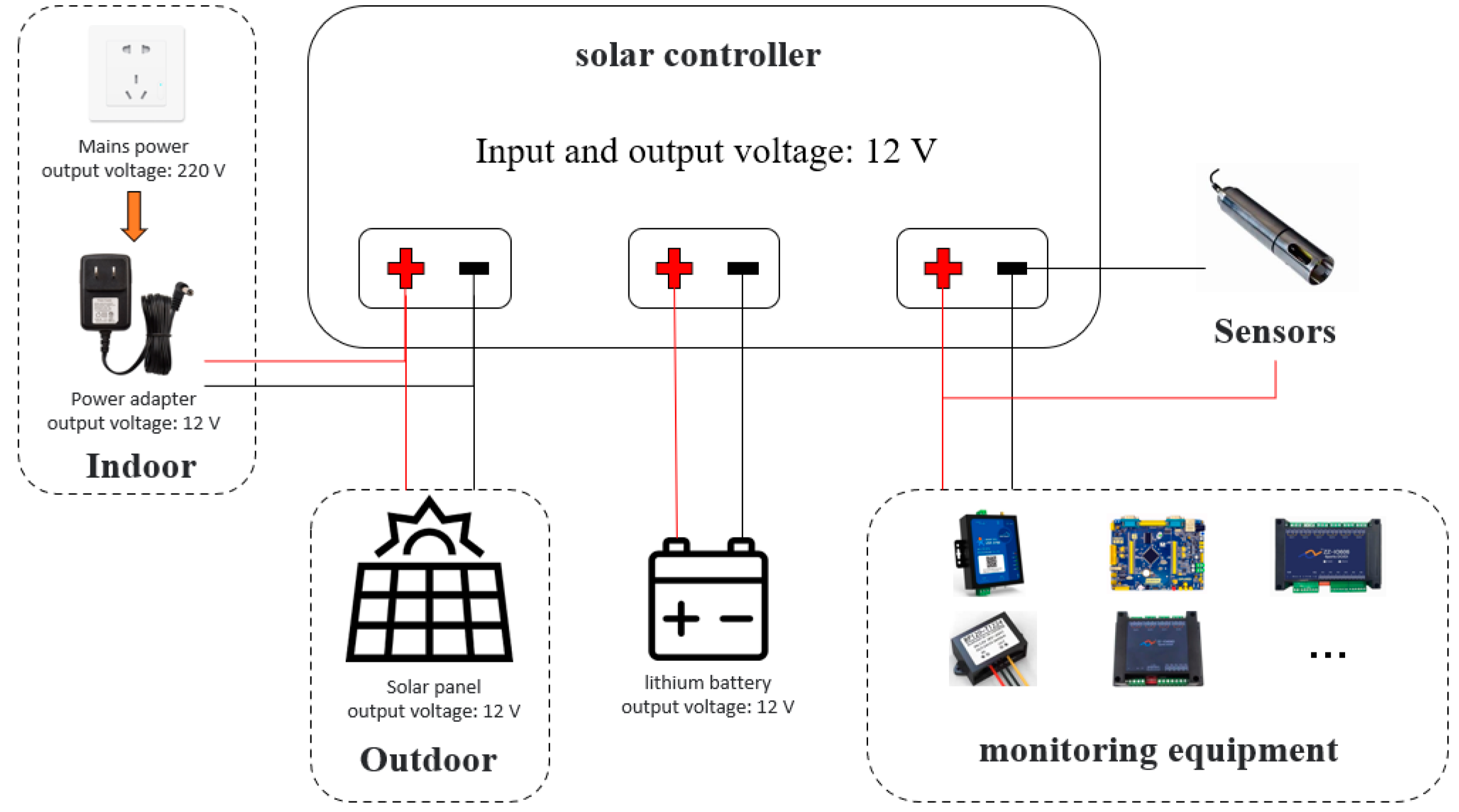
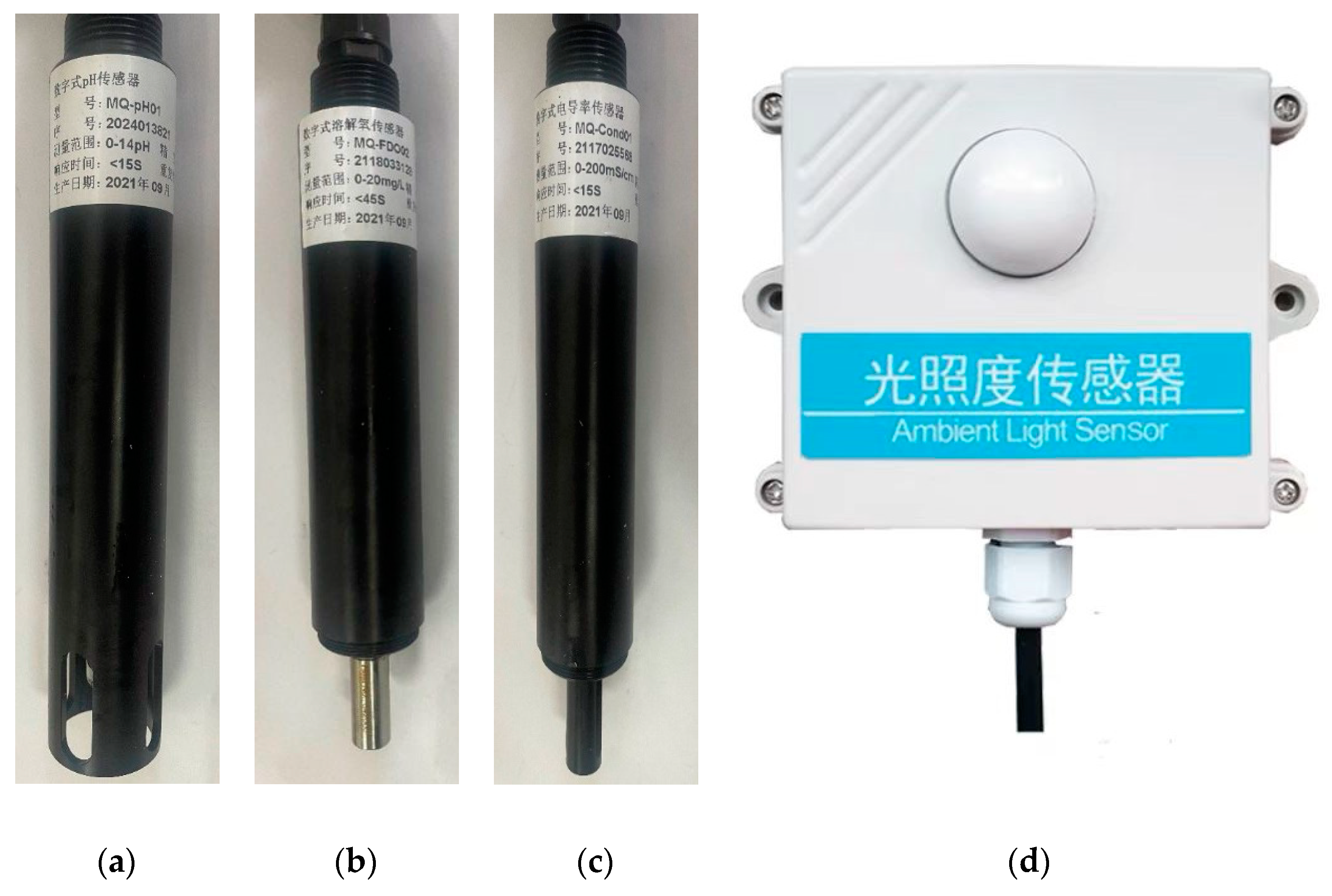
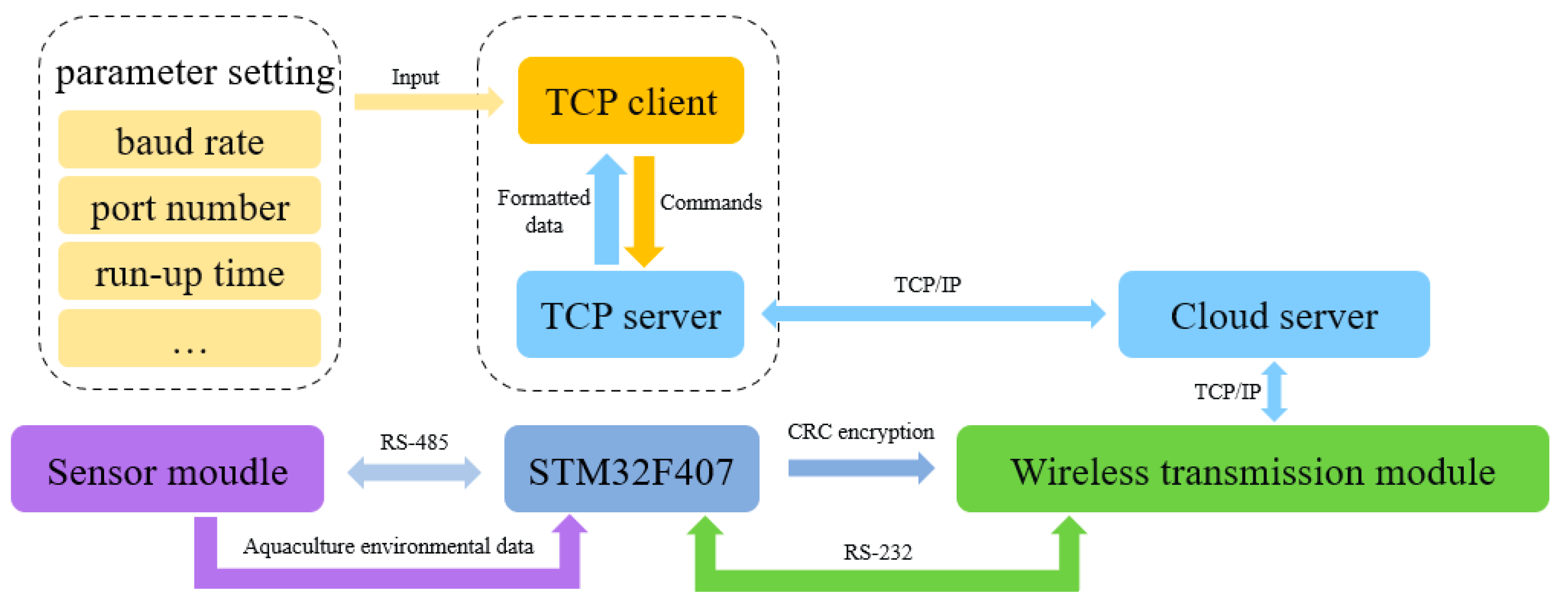

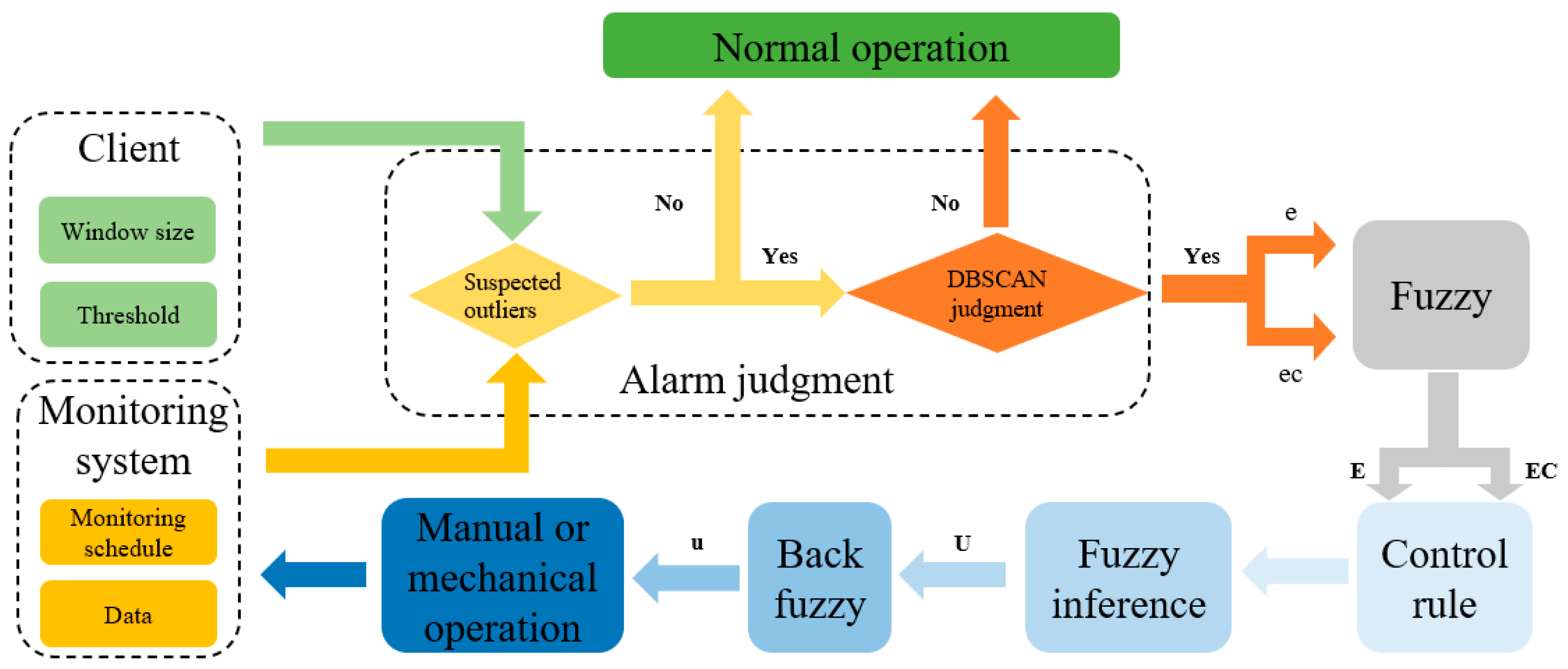

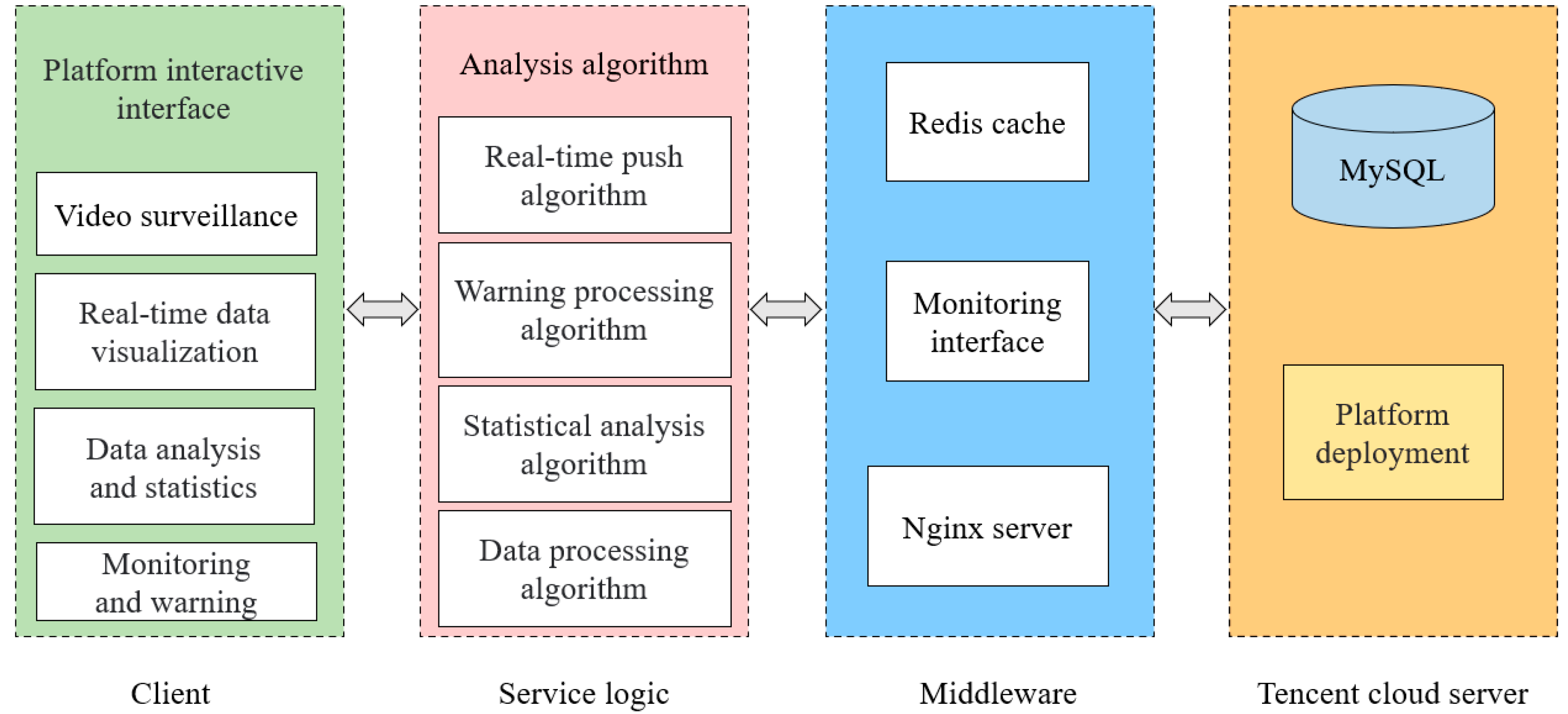



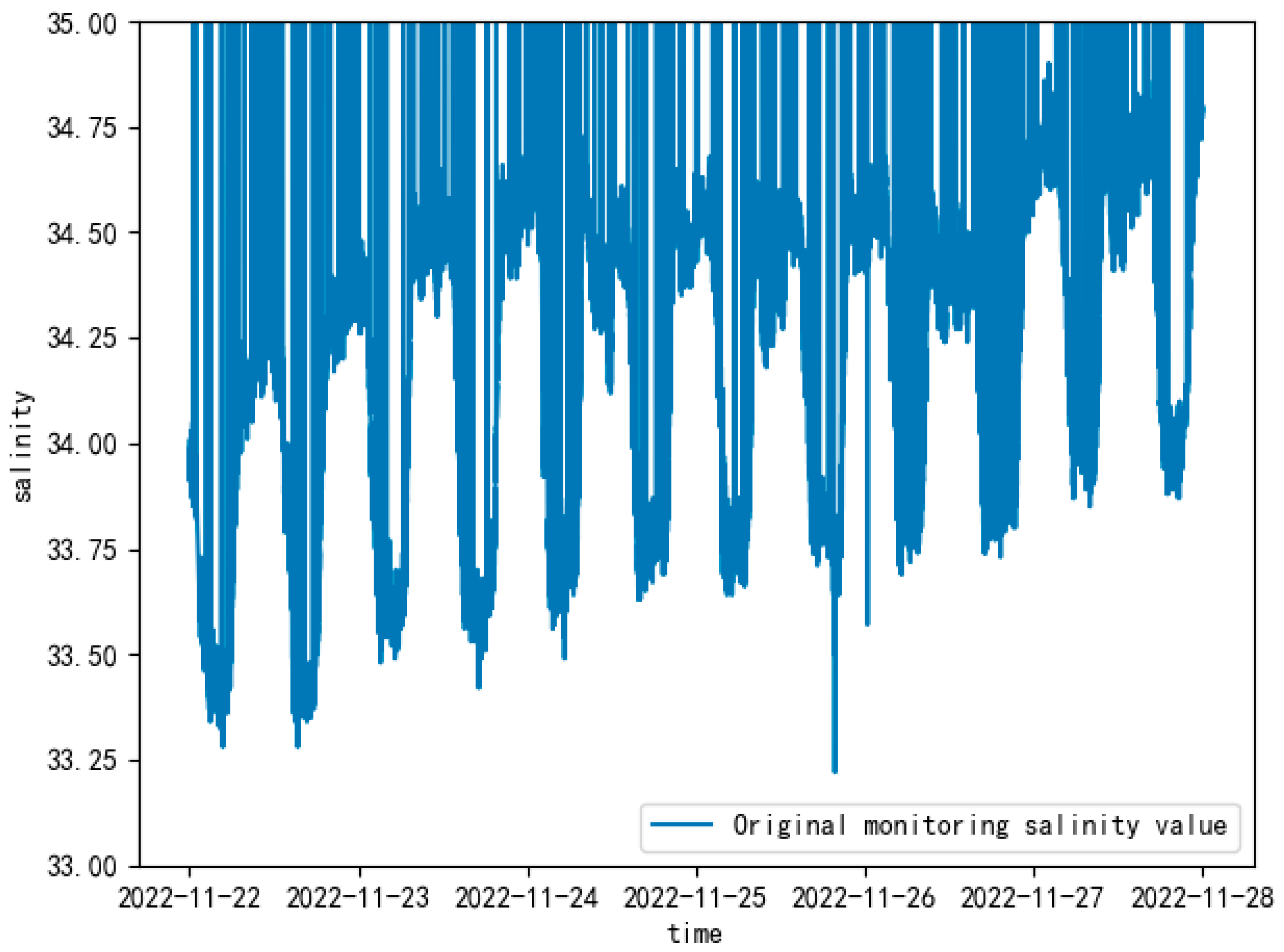
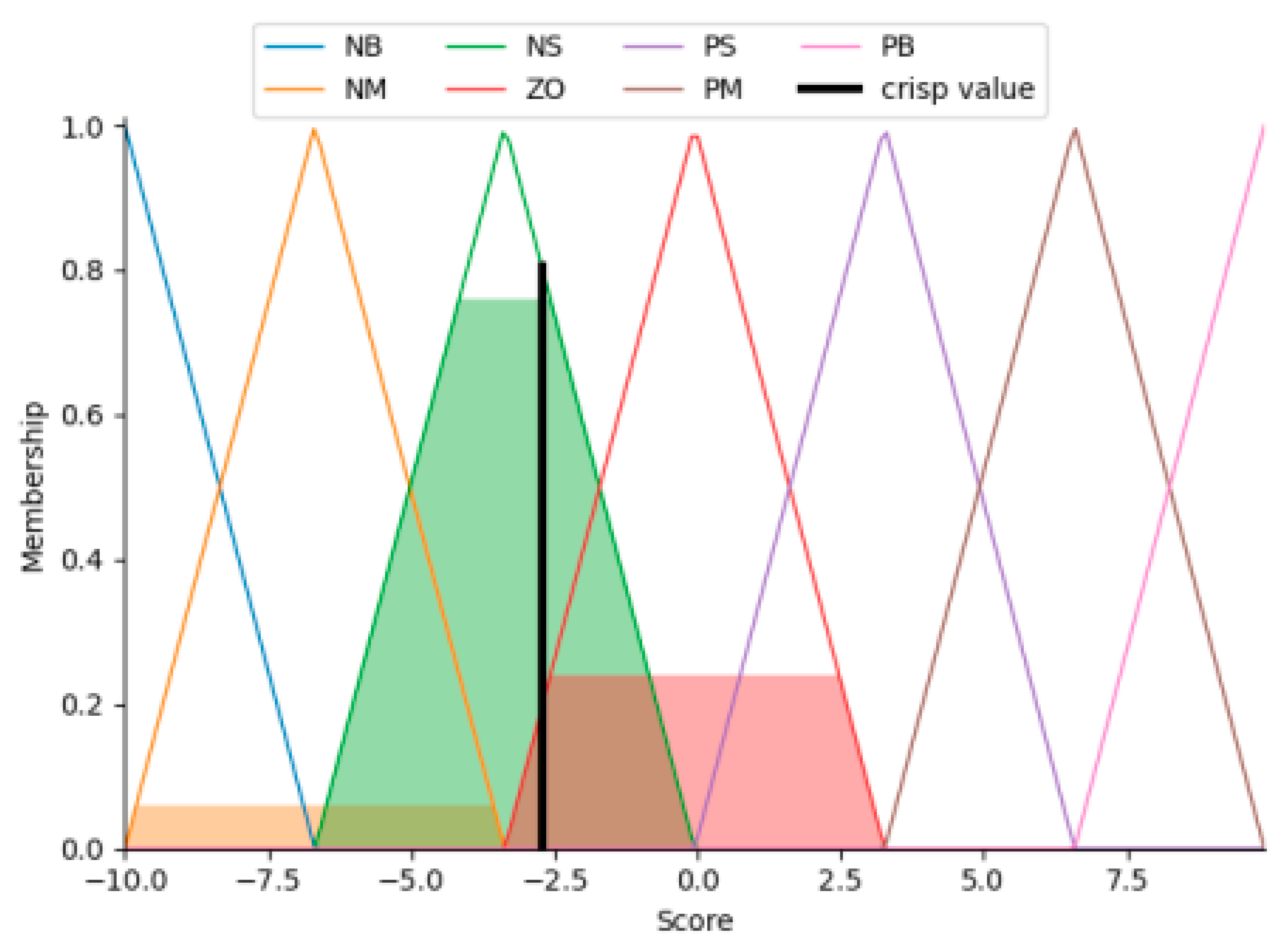
| Equipment | Manufacturer and Model | Number | Communication Mode | Parameters and Functions |
|---|---|---|---|---|
| Development board | The punctual atoms STM32F407 | 1 | RS-232 RS-485 (Modbus-RTU) | Control module |
| Photovoltaic solar panels | Jiangsu Feiyu Photovoltaic | 1 | - | Power: 150 W |
| Lithium battery | Anhui NewStrong | 1 | - | 12 V, 50 A |
| Digital conductivity sensor | Guohong environmental protection Instrument MQ-Cond01 | 1 | RS-485 (Modbus-RTU) | Conductivity: 0~200,000 μs·cm−1 |
| Digital pH sensor | Guohong environmental protection Instrument MQ-pH01 | 1 | RS-485 (Modbus-RTU) | pH value: 0~14 |
| Digital dissolved oxygen sensor | Guohong environmental protection Instrument MQ-FDO02 | 1 | RS-485 (Modbus-RTU) | Dissolved oxygen: 0~20 mg·L−1 |
| Light intensity sensor | Telegraphic unblocked electronics JXBS-3001-GZ | 1 | RS-485 (Modbus-RTU) | Illumination: 0~200,000 Lux |
| Intelligent spherical camera | Hikvision DS-2DE3Q120MY-T/GLSE | 1 | 4G traffic card | surveillance camera 12 V, 0.75 A |
| Four-way controller | The internet of people ZZ-IO404D-RS485 | 1 | RS-485 (Modbus-RTU) | DC 7~30 V, 10 A |
| Six-way controller | The internet of people ZZ-IO0606-RS232+485 | 1 | RS-485 (Modbus-RTU) | DC 7~30 V, 10 A |
| 4G communication module | The internet of people USR-G780 V2 | 1 | TCP/IP RS-485 (Modbus-RTU) | DC 5~36 V |
| Equipment Name | Slave Address | Calibration Method | Transmission Type | Storage Mode |
|---|---|---|---|---|
| Digital pH sensor | 1 | CRC Calibration | Float | small-end mode |
| Digital conductivity sensor | 2 | Float | ||
| Digital dissolved oxygen sensor | 3 | Long | ||
| 485 type light level transmitter | 4 | Float | ||
| RS-485 four-way controller | 5 | Float | ||
| RS-485 six-way controller | 6 | Float |
| U | EC | |||||||
|---|---|---|---|---|---|---|---|---|
| NB | NM | NS | ZE | PS | PM | PB | ||
| E | NB | NB | NB | NB | NB | NM | NS | ZE |
| NM | NB | NB | NB | NM | NS | ZE | PS | |
| NS | NM | NM | NM | NS | ZE | PS | PS | |
| ZE | NM | NM | NS | ZE | PS | PM | PM | |
| PS | NS | NS | ZE | PS | PM | PM | PM | |
| PM | ZE | ZE | PS | PM | PB | PB | PB | |
| PB | ZE | ZE | PS | PB | PB | PB | PB | |
| Time Period of Acquisition | Amount of Data Should Be Collected | Actual Amount of Data Received | Packet Loss Rate |
|---|---|---|---|
| 2022-11-21 18:00:00 to 2022-11-22 18:00:00 | 16,704 | 15,519 | 7.10% |
| 2022-11-23 18:00:00 to 2022-11-24 18:00:00 | 16,704 | 15,373 | 7.97% |
| 2022-11-25 18:00:00 to 2022-11-26 18:00:00 | 16,704 | 15,250 | 8.70% |
| mean | 16,704 | 15,381 | 7.92% |
| Detection Method | P | R | F1 |
|---|---|---|---|
| STW-DBSCAN | 87.71% | 82.58% | 85.06% |
| method II | 82.53% | 78.23% | 80.32% |
| method III | 42.35% | 78.79% | 55.09% |
| method IV | 92.29% | 16.31% | 27.72% |
Disclaimer/Publisher’s Note: The statements, opinions and data contained in all publications are solely those of the individual author(s) and contributor(s) and not of MDPI and/or the editor(s). MDPI and/or the editor(s) disclaim responsibility for any injury to people or property resulting from any ideas, methods, instructions or products referred to in the content. |
© 2023 by the authors. Licensee MDPI, Basel, Switzerland. This article is an open access article distributed under the terms and conditions of the Creative Commons Attribution (CC BY) license (https://creativecommons.org/licenses/by/4.0/).
Share and Cite
Zhang, H.; Liu, Y.; Gui, F.; Yang, X. A Universal Aquaculture Environmental Anomaly Monitoring System. Sustainability 2023, 15, 5678. https://doi.org/10.3390/su15075678
Zhang H, Liu Y, Gui F, Yang X. A Universal Aquaculture Environmental Anomaly Monitoring System. Sustainability. 2023; 15(7):5678. https://doi.org/10.3390/su15075678
Chicago/Turabian StyleZhang, Hanwen, Yanwei Liu, Fukun Gui, and Xu Yang. 2023. "A Universal Aquaculture Environmental Anomaly Monitoring System" Sustainability 15, no. 7: 5678. https://doi.org/10.3390/su15075678
APA StyleZhang, H., Liu, Y., Gui, F., & Yang, X. (2023). A Universal Aquaculture Environmental Anomaly Monitoring System. Sustainability, 15(7), 5678. https://doi.org/10.3390/su15075678







